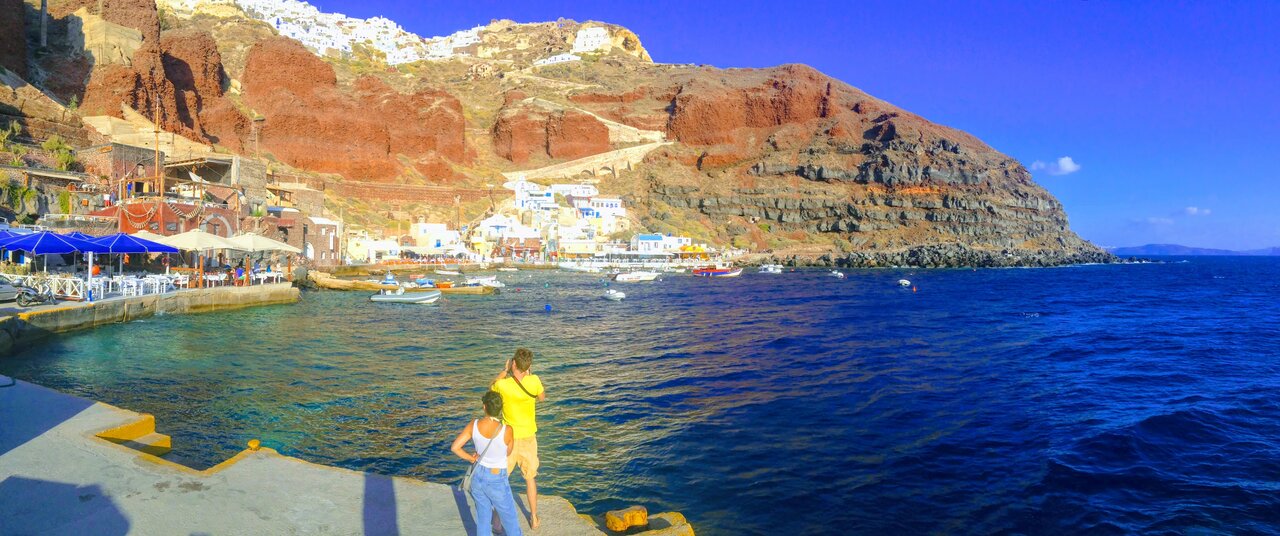Santorini: A Three-Colour Palette
Black is our sand, little chunks of basalt washed up ashore to cover the beach after the volcanic fires have cooled down to their present simmer. Black is our house walls and fences, storing the heat of the sun. Black is the volcanic craters of the youngest island in the Mediterranean, and when mixed with red—the barley rusks, long mussels from the sea, salty olives from the tree, bunches of Mavrotragano grapes hanging in the protective shade of their leaves.
Black is a reminder of the fires of our past and a promise of future comfort.
White is the sea salt, the honeycombed pumice, the limestone that paints our Cycladic houses and alleyways, chapels, and windmills. White is the sea foam, the foam on top of a latte or cappuccino. White is the curtains swaying in the breeze, the crisp sheets in your hotel. Whites are the yachts in the harbor and the sails that you see from your balcony or swimming pool. White is the morning mist or the fog shrouding the caldera and nourishing our grapes. White is clear Assyrtiko in your glass. White is a lone cloud in the sky and one half of our Greek flag. White is a wedding dress, tossed up by the playful Aegean wind.
White is purity and hope and a new beginning.
Red is our most famous beach at Akrotiri, rust-colored and iron-rich like the dust on Mars. Red is the resilient ochre paint of the Minoan frescoes, defying time itself to carry its images over into our age. Red is our wine and cherry tomatoes. Red is the sunset over the caldera and the ornate cliffs. Santorini red is the same iron-red we all have in our blood.


Comment (0)